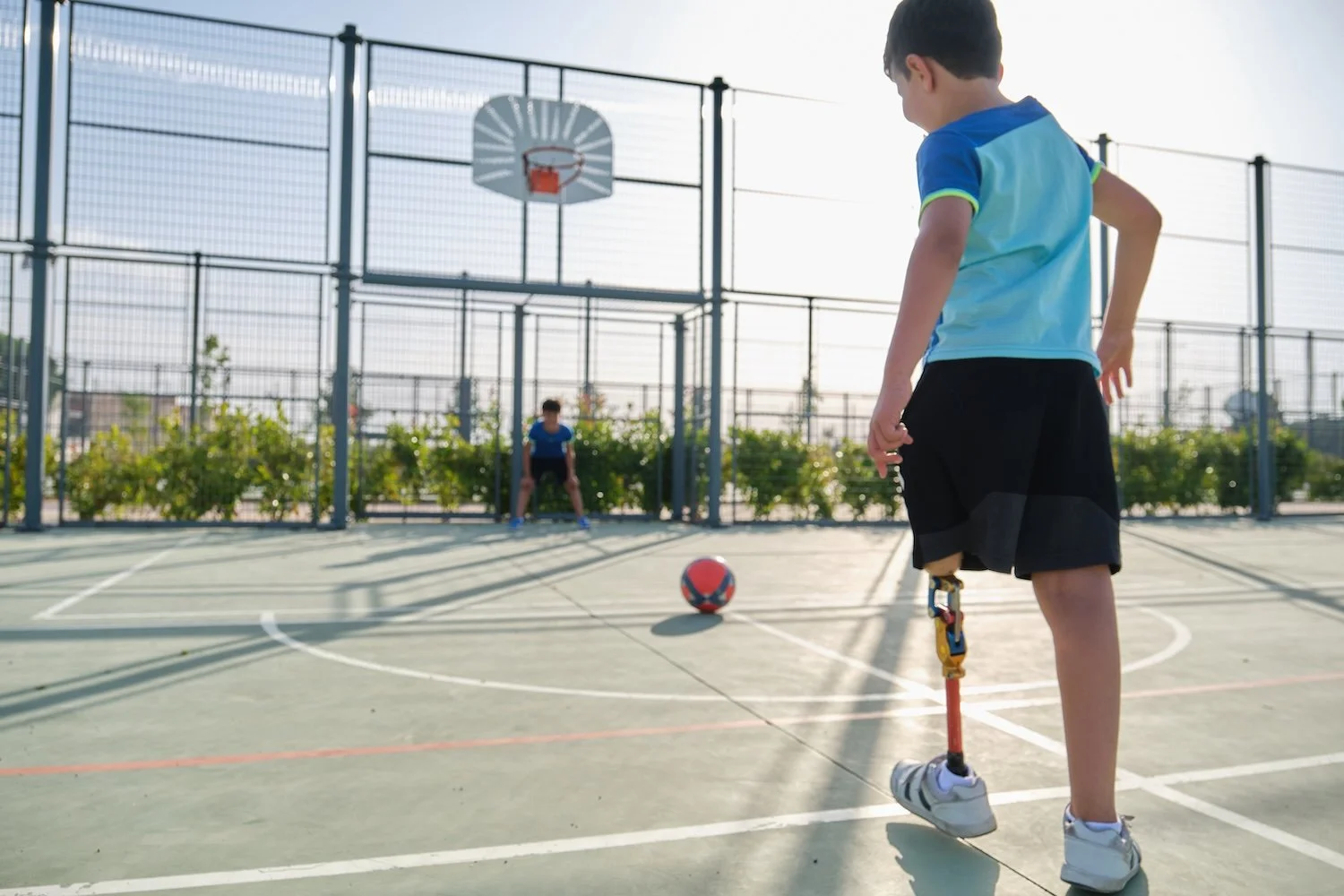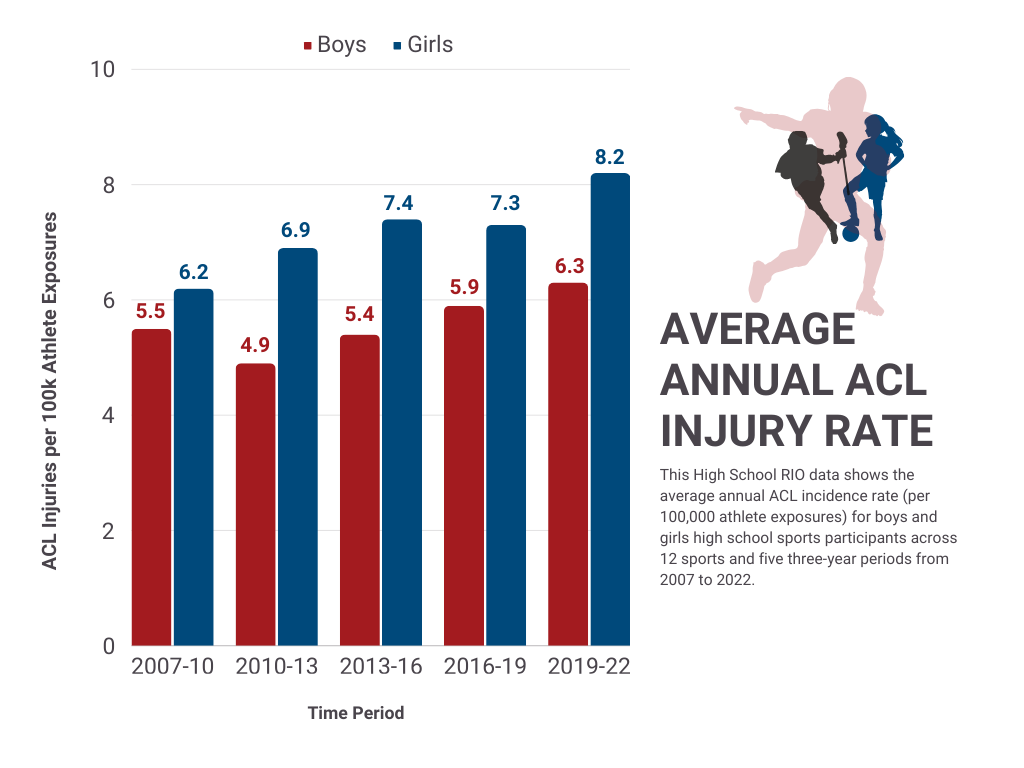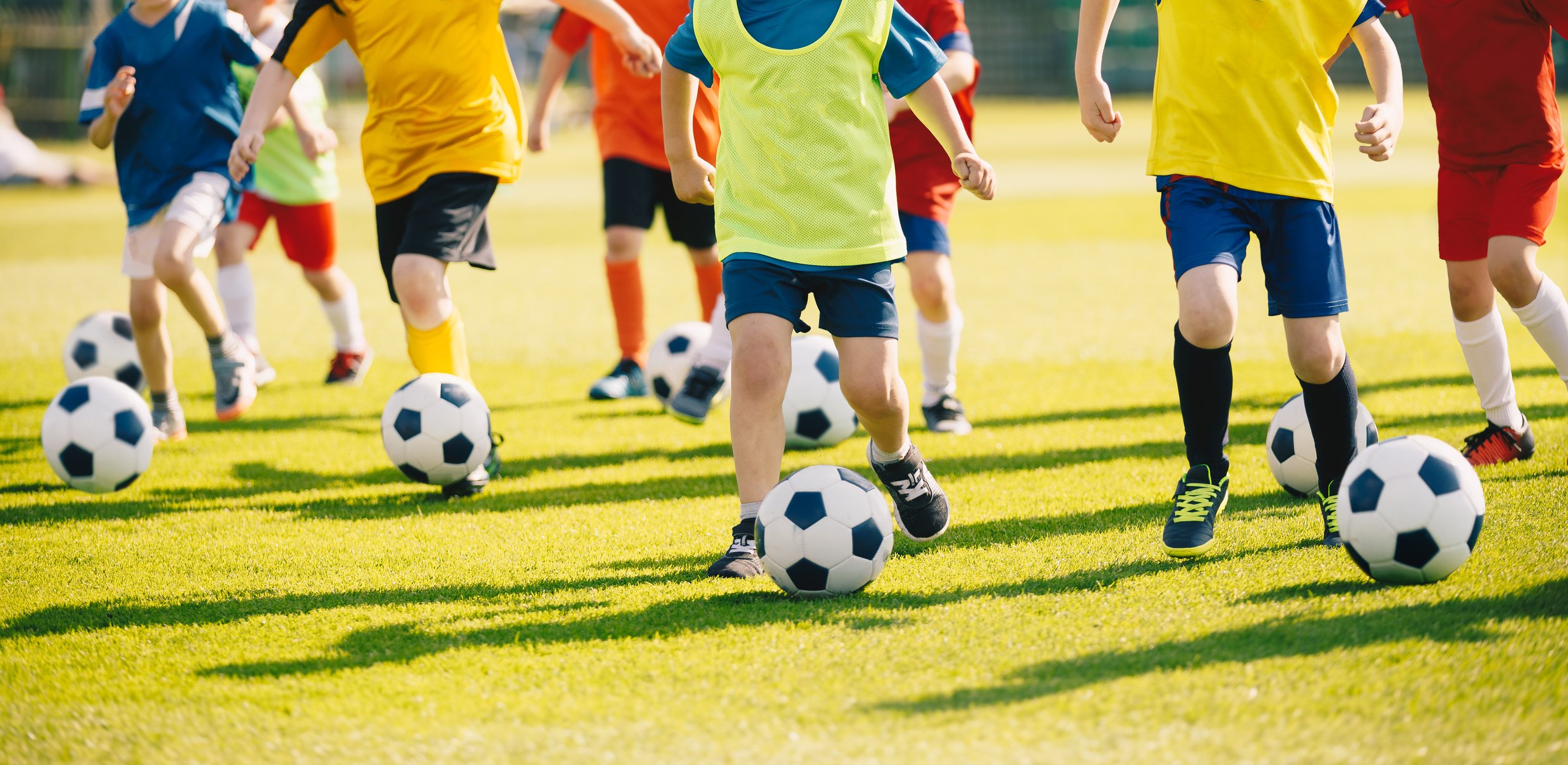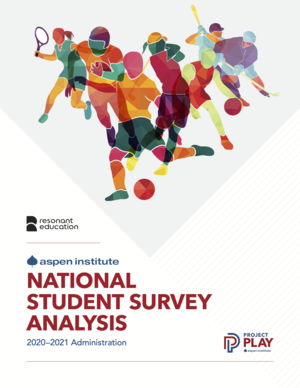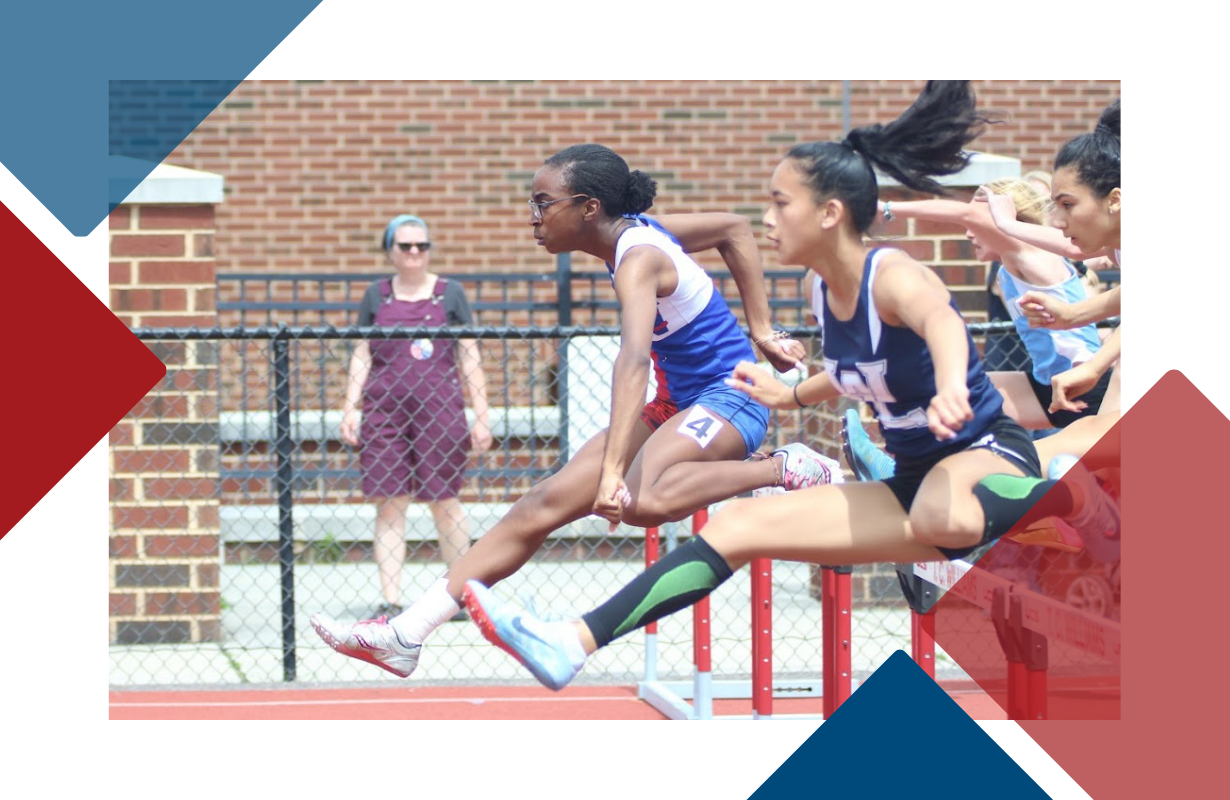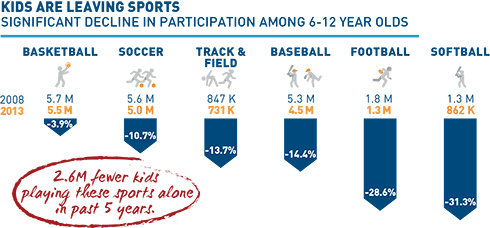Project Play is anchored in the notion that all children and adolescents, regardless of zip code or ability, should have access to high-quality sport activity that allows them to develop as human beings. Research by the Aspen Institute and others consistently shows the physical, mental, social, emotional, cognitive and academic benefits that flow to youth whose bodies are in motion. We also know communities thrive when they promote policies and develop infrastructure that encourage sport and recreation activity.
This page summarizes Project Play insights over a decade of research to explain why kids play sports, why they should and why they don’t. We intend this page as a one-stop resource for parents, coaches, advocates, sports leaders, policymakers, philanthropists and entrepreneurs who want to understand the state of play in the world’s largest youth sports marketplace.
Among children who play sports, those with disabilities annually participate almost one month less in practices or competitions than their peers without disabilities. The lack of play can be impactful – parents of children with disabilities are more likely to believe their child’s health worsened when not regularly playing sports.
If you’re the parent of a child in sports, chances are your life gets extremely hectic. It’s not just the extra costs with sports, although a 46% increase on family spending since 2019 that surpassed U.S. inflation leaves parents frustrated. It’s also their time commitment.
Youth sports parents nationally estimated their children lost about a week of sports practices or competitions in 2024 due to very hot temperatures, wildfires or wildfire smoke, flooding or changing winters. The new research by the Aspen Institute, Utah State University and Louisiana Tech is a rare estimate of how frequently our changing climate impacts sports activities for children in the U.S. – and a likely precursor of future challenges to safely play sports.
More than half of sports parents feel some or lots of pressure to have their child specialize in one sport, but today the source of that pressure is less often the chase for professional careers or NCAA-level roster spots than a venue much closer to home: high school sports.
More than half of sports parents feel some or lots of pressure to have their child specialize in one sport, but today the source of that pressure is less often the chase for professional careers or NCAA-level roster spots than a venue much closer to home: high school sports.
Participation in youth sports is getting more expensive – and there seems no end in sight.
The average U.S. sports family spent $1,016 on their child’s primary sport in 2024, a 46% increase since 2019, according to the Aspen Institute’s latest parent survey in partnership with Utah State University and Louisiana Tech University. The rising commercialization of youth sports impacts who can access quality sports opportunities or whether some children play at all.
Among the most dreaded injuries in sports, the rate of anterior cruciate ligament (ACL) injuries among high school athletes has grown significantly over the past 15 years, according to a new data analysis by organizations collaborating to assess and address the problem of serious knee injuries.
The National ACL Injury Coalition reviewed injury data for 12 major girls and boys sports over five three-year periods from 2007 to 2022, as supplied by certified athletic trainers in the High School RIO surveillance program. From period one to five, the average annual ACL injury rate grew 25.9% to 7.3 injuries per 100,000 athlete exposures. ACL injuries now represent more than 14% of all injuries involving the knee.
A new virtual population simulation by PHICOR shows the enormous benefits society could experience from achieving the federal government’s Healthy People 2030 goal for youth sports participation.
The supply of sport options provided by high schools is not meeting the demand for them, and the menu needs to be updated to include more casual and fitness-focused activities, according to a new national student survey released by the Aspen Institute and Resonant Education.
Increasingly, children are returning to sports as life in the U.S. reopens from the COVID-19 pandemic. But which kids play more often once again is being determined by money, according to a new survey by the Aspen Institute and Utah State University.
Two-thirds of high school students expressed concern they could catch or transmit COVID-19 through sports participation, but the vast majority said their interest to play sports has remained the same or grown over the past year, according to a new Aspen Institute survey.
As COVID-19 cases spike again in parts of the country, parents of children playing organized youth and school sports are increasingly worried about the health risks associated with their child returning to play compared to how they felt earlier during the pandemic.
Youth sports teams have dramatically increased their return to organized play during the past month and at a higher rate than initially expected, according to data from TeamSnap, a team management app used to schedule seasons and events.
Project Play, in partnership with researchers at North Carolina State University and Utah State University, surveyed a national sample of parents about their hopes, fears, and expectations for the return of youth sports amid the COVID-19 pandemic.
This article shares new insights on the sports experience for youth by gender, based on a national survey by the Aspen Institute’s Project Play initiative and Utah State University’s Families in Sport Lab.
This article shares new insights on the sports experience for youth across racial subgroups, based on a national survey of sports parents by the Aspen Institute’s Project Play initiative and Utah State University’s Families in Sport Lab. The data show sharp differences in access, and in pressures experienced by young athletes.
In this post, we break down the data by family income. Youth sports have become an estimated $17 billion industry, often leaving behind families who cannot afford to keep up with the escalating arms race. In our latest analysis of the parent survey, we explored participation rates, free play, pressure on kids, and costs to play by evaluating responses against household income.
The average child today spends less than three years playing a sport, quitting by age 11, most often because the sport just isn’t fun anymore. Their parents are under pressure, too, with some sports costing thousands of dollars a year and travel expenses taking up the largest chunk.
These are among the findings of a new national survey of parents of youth athletes conducted by the Aspen Institute with the Utah State University Families in Sports Lab. The results offer key insights on the contemporary challenges of getting and keeping kids involved in sports, the theme of a new public awareness campaign, “Don’t Retire, Kid”, that launches Aug. 4.
In the words of US Olympic Committee member Anita DeFrantz, “Sport is a birthright.” From combatting the growing obesity epidemic to promoting camaraderie and confidence, sport plays a pivotal role in helping kids become healthy on all levels —physical, social, emotional, and cognitive.


